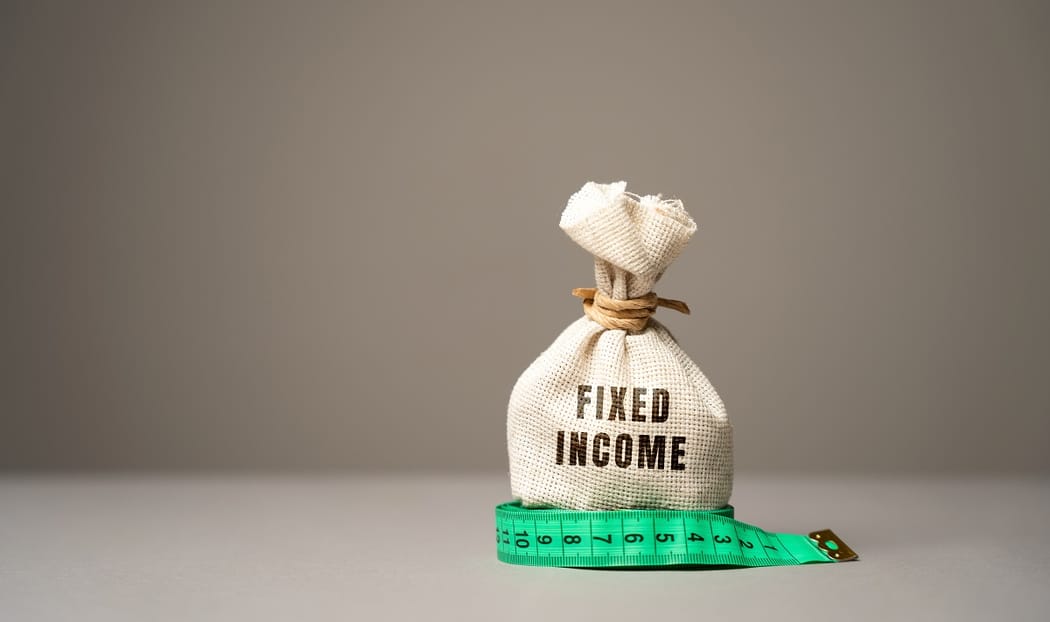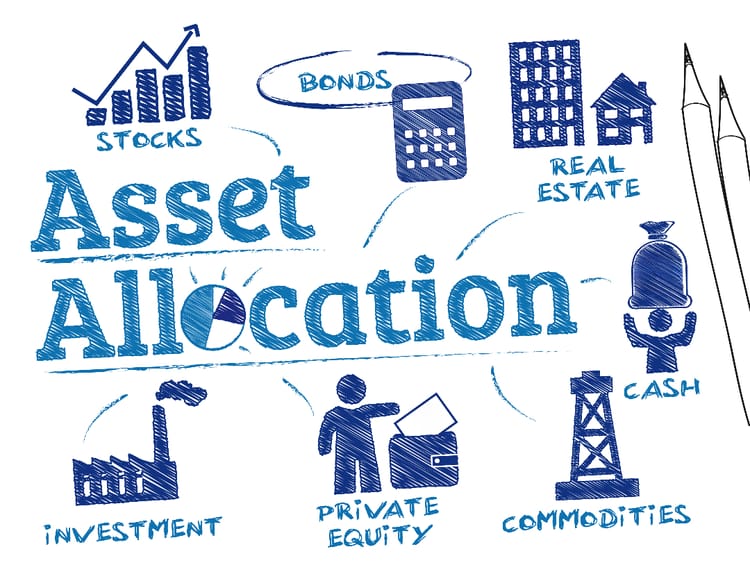Fixed income investment is often the first choice for many who want to invest conservatively. With a stable and predictable income, investors can just sit back and let their money earn passively. While safer than many other investments out there, fixed income investments are not immune to risks.
Here we will look at the following regarding fixed income investments:
- What is fixed income investment?
- What are the potential benefits of fixed income?
- Why should you invest in fixed income tools?
- What are the risks associated with fixed income?
- How to hedge against the risks attached to fixed income investments?
What is fixed income investment?
Fixed income investment strategy is where investors are paid a fixed interest until its maturity date. After maturity, investors receive the principal amount they invested. Fixed income investments are often debt instruments, where the borrowers issue them to finance their operations, and investors buy the fixed income instruments to receive a monthly fixed income. The interest amount does not rely on the profit or loss of the operation, unlike equities - where the income is variable and dependent on surplus/loss. Fixed income investor are often the first creditors in line to be paid when the borrowers face insolvency.
Fixed-income investment is not only for conservative investors but also for people who want to diversify their portfolios. Portfolio diversification between fixed income and equities balances the return with risks.
Examples of fixed interest investments
Some of the most common examples of fixed-income investments are:
- Bonds - consisting of government bonds, corporate bonds, junk or high yield bonds, and municipal bonds
- Fixed income investment fund or bond funds - an active investment fund where the fixed income portfolio is managed by a professional
- Certificates of deposit - protected by the guarantee fund, CDs require the money to be in the account for some time (usually less than 5 years). Interest rates are higher than the usual savings account due to restricted liquidity
- Fixed-income exchange-traded funds (ETF) - similar to actively managed mutual funds where it tracks the performance of a bond market index
What are the potential benefits of fixed income?
The benefits of fixed income depend on the asset itself. The general benefit of most fixed income instruments is that they are relatively stable, and you will get your capital back for most of the assets. The following will explain the benefits of some of the fixed income instruments:
- Bonds: For instance, Bonds are popular among investors for various reasons. Interests are paid monthly, and they are quite appealing to investors who want a consistent income stream. Unlike dividend payments, where the corporation can choose whether or not to pay, a company cannot choose whether or not to pay bond coupons. Failure to pay produces a 'default,' which means the issuer may face higher borrowing costs. Furthermore, there is a guarantee of capital return. Even though bond markets vary, the bond's issuer has pledged to repay the bond when it matures. In the stock market, the investor has no such certainty. Bonds are also stable compared to stocks. Stock markets can sway dramatically, and while bonds are also affected by the same causes, their price fluctuations are rarely as drastic as shares. Bonds' consistency is especially beneficial in a diverse portfolio, as it helps mitigate the effects of more volatile investments like equities
- Fixed income funds and ETF: Directly investing in the bond market might be difficult. As bonds are not traded on an exchange, buyers and sellers must negotiate a transaction price over the counter. Bond ETFs[1] trade on a stock exchange and offer transparent pricing. Investors can gain access to a well-diversified fixed income portfolio for the cost of one unit. Furthermore, using active strategies, investors can acquire exposure to a wide range of bond markets, from emerging market debt to investment-grade bonds, using ETFs
- CDs: A CD is a safer option because the funds are covered up to €100,000 by the Deposit Guarantee Scheme[2]. Unlike stocks, where significant sums of money can be lost or gained in a single day, cash invested in a CD will grow steadily. You can benefit from fixed rates and terms for the duration of the product. A fixed-rate CD has a fixed interest rate that is paid over the CD's life. You are not affected by interest rate hikes or decreases
What is the best fixed income investment
The best fixed income investment depends on what your goal is. But of course, before you decide anything, it is good to check the pros and cons of each fixed income examples.
For CDs, it is mostly how much interest you will be getting for your savings and the reputation of the bank itself.
For bonds, you need to check its creditworthiness. In the case of both corporate and government bonds, credit rating agencies assess a whole host of factors before assigning a credit rating to the bond. A bond’s score reflects its overall credit risk.
If you want to invest in fixed income funds, then look to most resilient funds that are made up of a mixture of bonds from various issuers. This approach spreads the fund’s risk.
Why should you invest in fixed income tools?
Fixed income investing perfect for individuals who may not have a high-risk tolerance. With their stable and regular income stream, investors have more opportunities to diversify their portfolio to offset the more volatile investment, such as stocks.
Moreover, investors’ rights and funds are backed by the issuer and, often, the state. Bonds are popular because the risks are not as high as stocks or other equities, and investors enjoy a contractual assurance. And even if the bond market suffers from fluctuation, the investor is bound to receive the money-back under contractual obligation. In terms of corporate and junk bonds, bondholders will be the priority creditors in case of liquidation. In the case of government and municipal bonds, their money is protected by state regulations. In CDs, the account holder carries mandatory protection up to 100,000 EUR by the guarantee fund[3].
Fixed income mutual funds and ETFs have the same benefits as normal mutual funds and ETFs. Aside from providing fixed interests, they are both liquid, and the cost of investing is lower than securities.
Does that mean that fixed-income investing is risk-free? Not at all - the risks under fixed income varies from other investment, and they are more subtle and reliant on external factors.
What are the risks associated with fixed income?
Fixed income risks depend on the instrument. The risks of bonds are different from CDs and mutual funds. The following analyses the different kinds of risks of fixed income investment:
Credit risk
It's possible for the bond's issuer to not be able or willing to pay any more income or principal. Rating agencies can change their opinions of bonds, making them less valuable. Credit risk[4] is more of a problem with high-yield or non-investment-grade bonds and bond funds that invest mostly in bonds that aren't very good. Having a lot of different bonds in a bond fund or ETF can help reduce the risk of an issuer defaulting or being downgraded, which could hurt bond prices. This is why diversification is so important.
CDs usually do not carry credit risk if the amount in the account is below the guaranteed threshold. The mandatory guarantee protects people who invest in CDs from the issuer's risk of not being able to pay. Any money above the guaranteed amount is, however, subject to credit risk if the bank goes bankrupt.
Interest rate risk
For fixed income investment rates, especially bonds, it suffers from interest rate risks[5]. If the interest rate rises, the prices decline because new bonds are likely to be issued that pay more interest, making the old bonds less appealing. If the prices increase, then interest rates will fall. This means that an investor may be able to sell a bond for more than its face value, because other investors are willing to pay extra for a bond that pays more interest, or a coupon. In these events, investors can sell off a bond in the secondary market rather than hold it until maturity. The longer a bond's term, the more its price can change when interest rates rise or fall. Depending on the price and interest rate at that time, the investor may profit or suffer losses.
However, if you hold on to a bond until it is due, interest rate risk is not much of a problem.
Inflation risk
Inflation is a concern for many who plan to live off their savings investments. And it should be because rising inflation impacts the purchasing power, and the things that were once affordable no longer is. CDs and bonds are particularly prone to inflation risk since the income is disproportional to the value lost to inflation.
Treasury bonds[6] may be a good way to mitigate this risk. Treasury bonds linked to inflation in the Eurozone are securities that safeguard investors from price increases. Both the principal and the coupons to be repaid at maturity are adjusted for inflation in the Eurozone, as assessed by the Harmonised Index of Consumer Prices (HICP), excluding tobacco. The bondholders will be compensated for any loss in purchasing power throughout the bond's term upon maturity.
Liquidity risk
Liquidity risk[7] prevents investors from from buying or selling investments promptly at a price close to the asset's true underlying worth. When a bond is described as liquid, it means that it has an active market of investors buying and selling it. Treasury bonds and larger corporate issuers are generally quite liquid. However, not all bonds are liquid. Some trade seldom, which can be an issue if you try to sell before maturity. The fewer people interested in buying the bond you want to sell, the more probable you'll have to sell for a lower price, potentially losing money. Bonds with weaker credit ratings face a higher liquidity risk.
Prepayment risk
Prepayment risk[8] exists in some types of individual bonds, including mortgage-backed bonds. Prepayment risk is when a security issuer will return the principal before the bond's maturity date, causing the bond's scheduled payment schedule to change. This is particularly true in the mortgage-backed bond market, where a decrease in mortgage rates can trigger a refinancing frenzy. Investors in the underlying pool of mortgage-backed bonds receive their principal back sooner than expected when homeowners restructure their mortgages and must reinvest at lower, current rates.
Spread risk
Spread risk[9] refers to the possibility when the credit spread for a given investment is too low to justify investing in that loan or bond, making the investment less beneficial. Greater interest rates are paid on riskier loans, resulting in higher spreads. Credit spreads tend to be higher when people are concerned about defaults in general. The bond's value will fall because investors will be less willing to take on the additional default risk for the lower spread. Organizations seeking to borrow money must pay relatively higher interest rates to entice investors to take that risk.
Reinvestment risk
Reinvestment risk[10] refers to the chance of not being able to reinvest the coupon payments from a bond at a rate that is comparable to the present return. This risk can be addressed to some extent by falling interest rates, which will raise the bond's market price. High coupon rates and extensive reinvestment periods pose the greatest danger of reinvestment.
Reinvestment risk exists with CDs since you may not be able to reinvest the money at the same rate when it matures. At the same time, if rates rise after you buy the CD, you won't be able to benefit from the greater return because most CDs require you to leave your money alone until the term finishes, or you'll be charged an early withdrawal penalty.
Downgrade risk
Downgrade risk refers to when the bond issuer's creditworthiness deteriorates, resulting in higher yields and lower bond prices. Downgrade risk refers to the possibility that the bond's creditworthiness will deteriorate, causing major rating agencies to decrease the bond's rating, or downgrade it.
Price risk
The effect of fluctuation of interest rates on the bond's market price is referred to as price risk[11]. Bondholders with shorter time horizons, such as short-term traders, are most vulnerable to price risk, as they may sell a bond before receiving a coupon payment.
How to hedge against the risks attached to fixed income investments?
There is no way to eliminate risk on fixed income investment completely. However, you can hedge against those risks. Optimal asset allocation and portfolio diversification are critical for hedging investment risks in general. For individual types of risk, it depends on the type of investment instrument because each instrument has its own volatility and risks, and some require specific preventive methods to minimise losses against returns. For instance, you can hedge the interest rate risks of fixed-income investment with other fixed-income investing tools that rely on futures, such as forward contracts. In forward contracts, you can short sell your investment in the future at a fixed price. This will allow you to recover losses from the interest rate. You can mitigate credit risks by charging higher interest rates to borrowers with lower credit ratings. You can also buy credit insurance to transfer the risks of the investment to the insurer. Lastly, you can hold collaterals as pledges from the borrower, which you can liquidate to compensate for your losses. You can hedge against inflation risk by diversifying your portfolio with assets that yield higher returns, such as equities. It will offset both risks from equities and your fixed-income investment.
Summary
A fixed income investment plan is one in which investors receive a fixed rate of interest until the investment matures. Fixed interest investing is suitable if you are looking for a stable income. Bonds, fixed-income funds, CDs, and fixed-income ETFs are the most common fixed-income securities. The advantages of a fixed income investment are monthly interest payments, the guarantee of the principal, and its stability. It's ideal for those who are wary of high-risk ventures. Credit risk, interest rate risk, inflation risk, liquidity risk, prepayment risk, spread risk, reinvestment risk, downgrading risk, and pricing risk all exist in fixed income investments. You can mitigate some of the risks by diversifying your portfolio, using forward contracts, and charging borrowers higher interest rates.
Fixed income investing perform best when combined with other investment strategies that aim for higher returns. Fixed income investing is designed to mitigate the risks associated with high-risk equities, such as stocks, and to balance equities' volatility by providing a cushion to limit your losses.
Frequently Asked Questions
Is fixed income investment completely risk-free?
No, fixed income investments are not entirely risk-free. While they are generally safer than equities and offer predictable returns, they still carry risks such as credit risk, interest rate risk, inflation risk, and liquidity risk. Understanding these risks helps investors make informed decisions and avoid assuming fixed income is a guaranteed investment.
What are the main risks of fixed income investing?
The main risks include credit risk (the issuer may default), interest rate risk (rising rates reduce bond prices), inflation risk (reducing purchasing power), and liquidity risk (difficulty selling before maturity). Other risks, such as reinvestment risk and downgrade risk, may also affect returns. Diversifying across different fixed income instruments can help reduce exposure.
How can investors hedge against risks in fixed income investments?
Investors can hedge risks by diversifying their portfolios, using instruments like forward contracts to manage interest rate risk, or investing in inflation-linked bonds to protect against rising prices. Credit risk can be mitigated by choosing high-rated issuers or using credit insurance. A balanced mix of fixed income and equities often provides better long-term protection.
List of References
- Source: am.jpmorgan.com
- Source: finance.ec.europa.eu
- Source: finance.ec.europa.eu
- Source: www.fidelity.com
- Source: www.investopedia.com
- Source: www.dt.mef.gov.it
- Source: www.investopedia.com
- Source: www.investopedia.com
- Source: pocketsense.com
- Source: www.bankrate.com
- Source: www.bankrate.com






